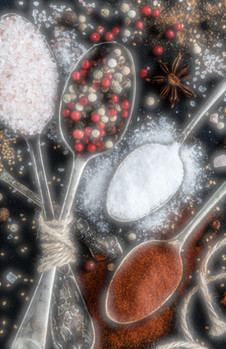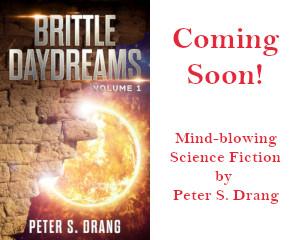
I’ve written posts about how to use dreams to generate new story ideas and also how to transform everyday activities into ideas. This post will explore yet another way to come up with compelling stories: mixing together ideas from other stories you’ve read.
T. S. Eliot is often quoted as saying: “good writers borrow, great writers steal.”
He wasn’t advocating plagiarism (and neither am I!) but it’s undeniable that every author learns how to put words together by reading the works of other authors and admiring certain ways of telling tales, setting a scene, or describing action. Sure, they develop their own style and voice over time. But ultimately, every writer starts by standing on the shoulders of past literary giants.
If You Want to Write, Read. A Lot.
Writers are readers first, and good writers continue a lifelong habit of copious reading. Isaac Asimov famously read at every opportunity, and not just in science fiction. He read history, hard science, general nonfiction, and other genre fiction too. The same is true of many (most?) great authors.
When you read, your mind soaks up new ways of turning phrases, new ways to describe things, present characterizations, set a scene. You can read for pleasure, certainly. But don’t forget to also read critically. How did an author you love handle a certain kind of dialog? What techniques did they use to keep the plot moving? Even mundane things like how they treat paragraphing can give you ideas you can use to improve your own writing.
Combining Ideas
Frequently my own stories will combine ideas from two or even three other stories or novels I’ve read. I’ll always have a very different take on the subject matter, and of course I’ll use entirely different situations and characters to illustrate the ideas (that’s why it’s not plagiarism: you’re not copying characters, situations, or any lines of text or dialog, and you’re putting your own spin on an idea, not using it directly).
Let’s face it, there’s nothing new under the sun, all stories are based on concepts that have come before. If this weren’t true then H.G. Wells would have written the first and only time machine novel!
(Okay, some reader who is a time machine scholar is probably going to point out that an obscure ancient Egyption wrote a time machine story thousands of years ago, but this would only serve to prove my point.)
EXAMPLE: How to Foresee Your Own Death, Lesson One
I’m currently writing a flash story with the title shown above. (Pretty catchy, right? Hopefully the title makes you want to read it right now. Patience!)
This story was inspired by one of the concepts in a Robert Silverberg novel, The Stochastic Man, combined with the general mood of a story I read on the web (The Gods of the Gaps by David Stevens on 3LobedMag.com). The concept is simple: if you can see the future, then seeing your own death will have real consequences and may present some interesting issues.
Of course, stories about prophesies causing trouble (via associated logical issues) go back to Oedipus and I’m sure earlier. There’s nothing new under the sun, after all.
My take is quite different from the one in Silverberg’s novel.
My models of time and prophecy are also very different from what’s presented in The Stochastic Man. The only ideas I’m using from the Gods of the Gaps are the general mood and tone (narrator is professorial sounding) and tense (second person present tense with the narrator using the royal “we”). My narrator doesn’t really sound the same vocabulary-wise or use the same phrases, mind you, it’s only the mood, general tone, and tense choices that are similar. I had been reading a lot of web stories that day and it just struck me that those choices would work well for this story.
In any case, a combination of these two stories, using ingrediants from both, inspired me to write a new story with a different message and presentation, and that explores additional ideas.
The General Method
This method is easy to apply:
First, read and read often! Read things you love, and not just in your genre. Cross genre ideas are often useful and unique too, and nonfiction can lead to wonderful ideas too.
Second, recognize what you love about what you’re reading. What ideas in what you’ve read excite you? Do you agree with how the author presented the idea? Do you disagree, or at least see other ways the idea could be handled that put a new spin on it? If so, write it down in your IDEAS file.
Finally, using these ideas as ingrediants, synthesize two or more ideas (or moods, or styles) into something new and unique, stamp it with your own identity and the personal viewpoint only you can bring to it.
SEE ALSO: How to Dream Up New Science Fiction Story Ideas
SEE ALSO: Turning Everyday Life into New Science Fiction Story Ideas
SEE ALSO: The Short Story Funnel


